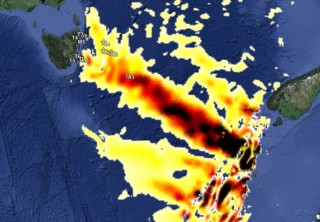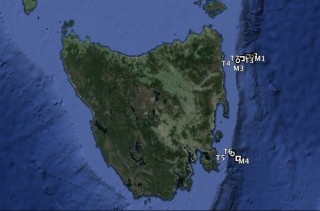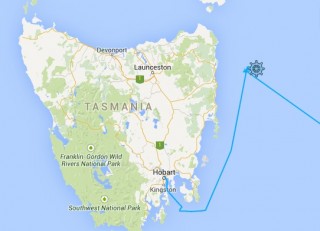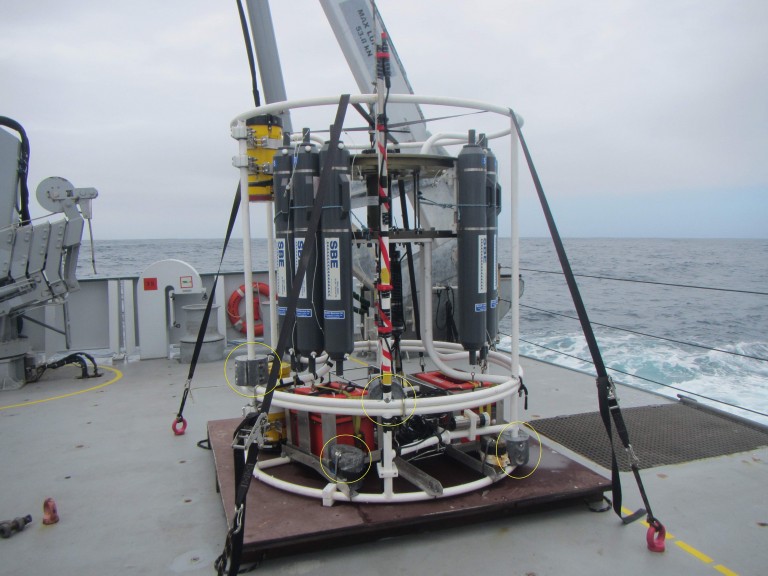Well, not just passing, but collaborating in a very unique way. By the time Falkor started steaming out of Hobart, the RV Revelle had been at sea for a week and a half, deploying their record 15 moorings and starting CTD-LADCP profiling along the continental slope of Tasmania. With the Revelle’s head start on the science, we decided to make use of a rare opportunity almost never granted in oceanography – to allow for simultaneous two ship operations.

Hot Spots and the Isobath
Most of the preliminary modeling work done by the TTIDE scientists before the cruises indicated that the topography (the bottom profile) of the continental slope greatly affected how much energy of the internal tide was dissipated at the slope versus reflected back into the Tasman Sea. Several “hot spots” were identified along the continental slope and the moorings were placed both at the southern and northern slopes of Tasmania. When we finally reached the RV Revelle, they had just finished deploying the last of the northern moorings. That meant we could get to work together. As soon as we arrived, we coordinated operations to study the variation of the internal tide moving across the 1000m isobath (a section along the seafloor that has the same depth of 1000m). We positioned ourselves about 2km south of the mooring line, and the Revelle was a further 2km south of us – both doing CTD-LADCP profiling along the 1000m isobath.


As the internal tide travels across the Tasman Sea in a large beam, it interacts with the continental slope differently depending on the type, roughness and steepness of the topography. Although the Revelle and Falkor were less than 8km apart, modeling results showed that the amount of mixing and characteristic of the internal tide changed along that 8km stretch of slope.
Success!
As this was our first real opportunity to start CTD profiling, there were many kinks to work out in the system before we could get our first successful profile. The bumpy seas (4-5m waves) were causing the wire used to lower the CTD to be very unstable, as the whole CTD package was not sinking fast enough. After spending nearly a full day troubleshooting with the fantastic Falkor crew, we managed to solve the problem by adding more weight (almost 400lbs added using big chunks of lead) and making the package more aerodynamic by rearranging the Niskin bottles. Sometimes you just have to keep trying things until they work, and finally it did!

We got a great time series of data over a semi-diurnal tidal cycle (which is about 12 hours) just south of the northern mooring, and north of where the Revelle was positioned. We could see the Revelle in the distance and talked to them over the VHF radio, which was a fun and very unique way to coordinate our science!
